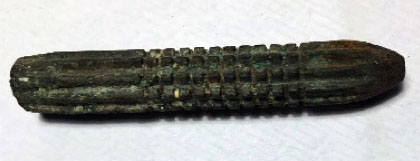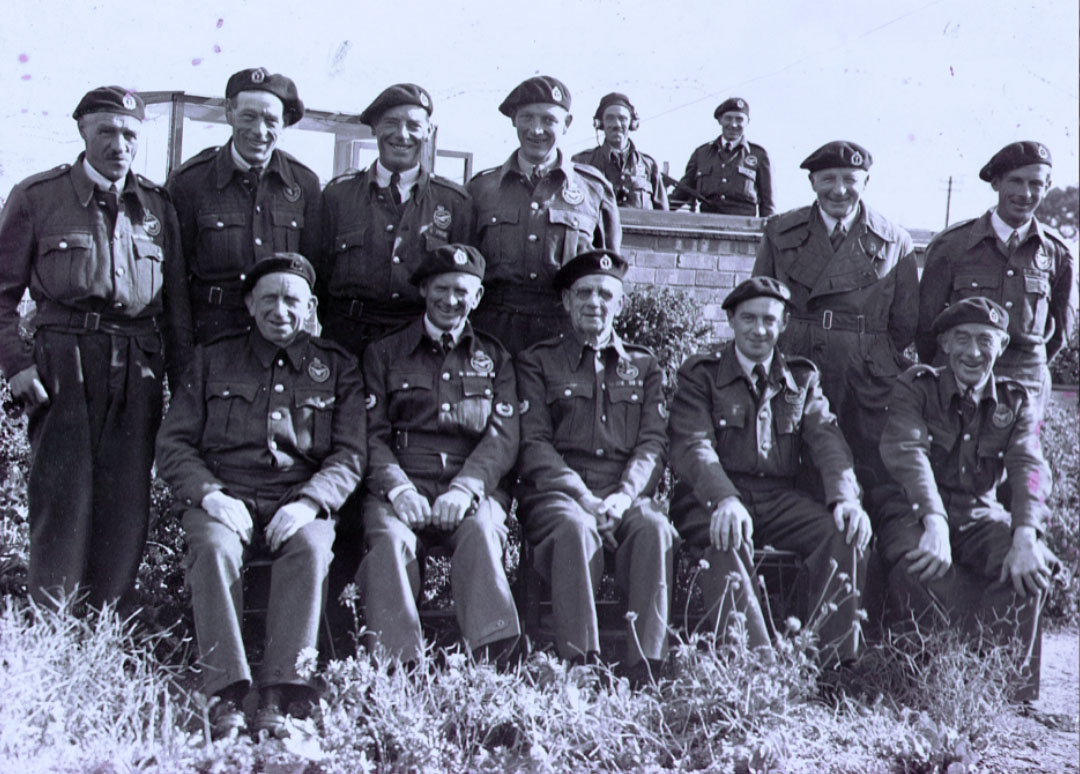Helen Wyles
Photo: The Observer Corps Coddenham
The Black Out
All windows had to be curtained with light-proof black material and doors an inside curtain. The Church had special shutters for the windows which had to be fixed before winter evensong. Church bells and the Church clock were silenced, only to be rung in the event of invasion, William Joyce (alias Lord Haw-Haw) who broadcast on the German radio frequently made remarks about the time on Claydon Parish Clock.
The Home Guard
There were Sunday morning meetings in the Parish Hall and little “manoeuvres” in the village rehearsing for invasion defences. The remains of their ammunition dump used to be found at the back of some gardens in School Road.
ARP (Air Raid Precautions)
There was a shepherd’s hut on Mill Hill where they would have shifts of fire watching in the beginning.
Red Cross
A team of ladies who had First Aid meetings in the Parish Hall.
Special Constables
Ernie Pyett, Reg Palmer Senior and Tom Hammond.
Observer Corps
Mr Stallibrass inspected many of the posts in Suffolk although he didn’t move to live in Coddenham until 1947.
Bickers Garage and Buses
Garages were considered essential for the war time maintenance of agricultural equipment. But call-up had somewhat reduced the staff and so, Geoffrey Bickers’ sister Margaret took a PSV test in 1940 and helped with the driving of the buses. Services were curtailed in the evening and excursions were abandoned. One of the staff, Harry Baker (of Crowfield) was self-allocated to the R.E.M.S camp in Shrubland Park for the early part of the war and drove home to Crowfield every night. It is said that his fuel level on his return the next morning was usually considerably lower after passing by the garage the night before. He was eventually sent to Italy.
High Explosive Bombs
The earliest and nearest bomb was dropped in an arable field in the autumn of 1939 at the top of the Norwich Road, nearly opposite the houses next to Creeting “Bucks Head”. No-one injured. About 1941 or 1942 was the Needham Market Raid. Christopher and Nelson Wyles were in the bacon factory with Mr Ralph Quinton and Mr Garrod when the bomb exploded outside. They were all badly shocked and bruised by debris, Christopher Wyles having fragments of glass embedded in his head and burst eardrums. A woman on a bicycle was never seen again and a cement lorry exploded. There were several casualties.
Because of fire risk farmers were not allowed to build hay or corn stacks within a certain distance of houses or farm buildings. The Chapmans’ at “Old Rectory Farm”, Hemingstone were up for many nights putting out fires all round their stacks, the result of incendaries.
Butterfly Bombs & high explosive devices– Many of these were found in Cooper Road and other local places. Three bombs landed in the field opposite the cricket pitch in the High Street.
Machine Gun Fire
Lone German planes would cruise around the village aiming for people. Christopher Wyles and Sam Fuller both had narrow escapes in the fields and farmyard at Manor Farm, where there was also bullet marks on the back door. Several other local farmers were similarly in the firing line. George Calver can remember being told of the German plane that targeted and shot around the village.Apparently there are still bullet holes to be found.

This bullett was found at The Old Dower House and was labelled “probably from Germans plane which shot up the High Street”.
Dog fight
Two planes were witnessed in the summer of 1940 and saw one shot down. It was probably the plane that came down in Gippeswick Park, Ipswich. Later in the war another German Plane crashed near the River Gipping at Sharmford (near the old Rous’s Garage on the old Norwich Road). Two Germans baled out, one was hung in a tree. Another was reputed to have been arrested as he sat on a seat at the “Three Cocked Hat”.
Rockets & Doodlebugs
These were launched during the last years of the war and the impact could be heard of the rockets landing in the early morning hours, weeks before they were officially confirmed. The first “doodle bug” flew over the village on a Sunday morning making a dreadful sound – it exploded two miles away. At night times they could be seen circling round the church tower with red and yellow flames shooting out of their tails. They continued until the allies destroyed the launching sites.

0 Comments